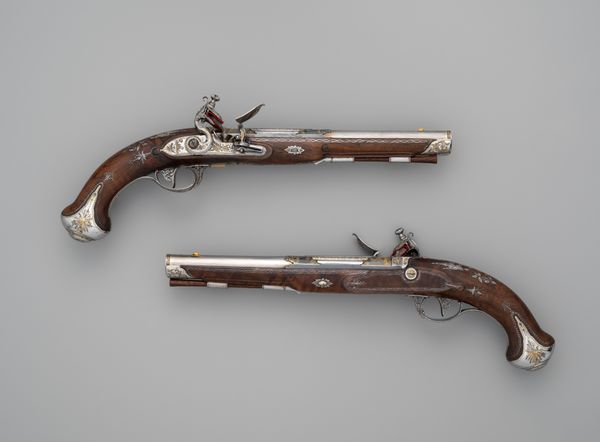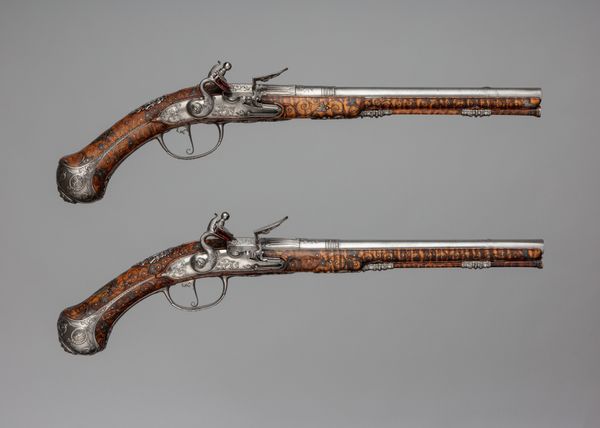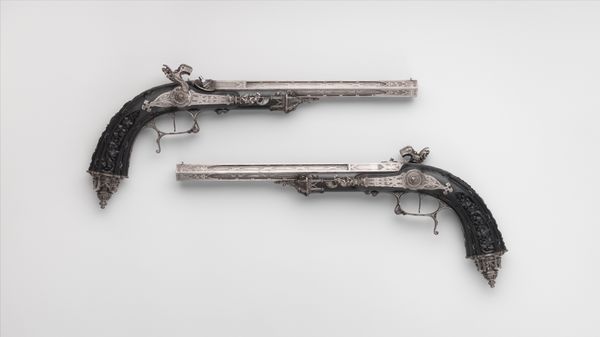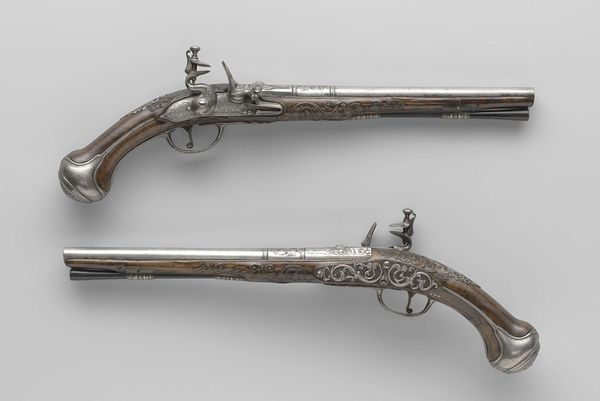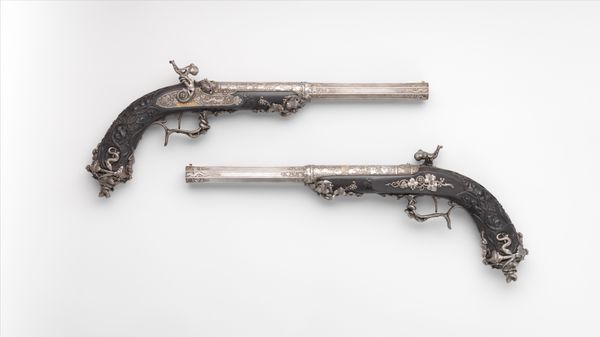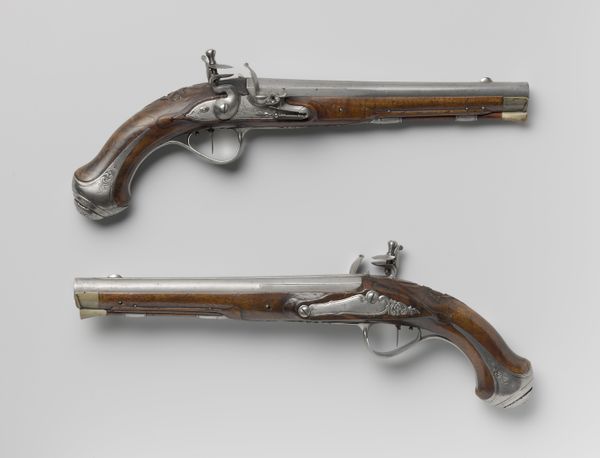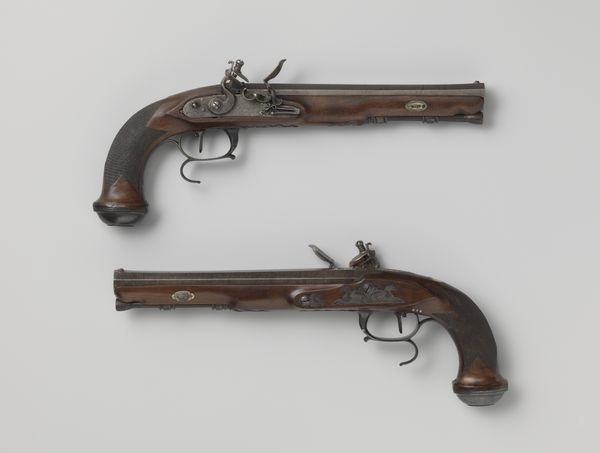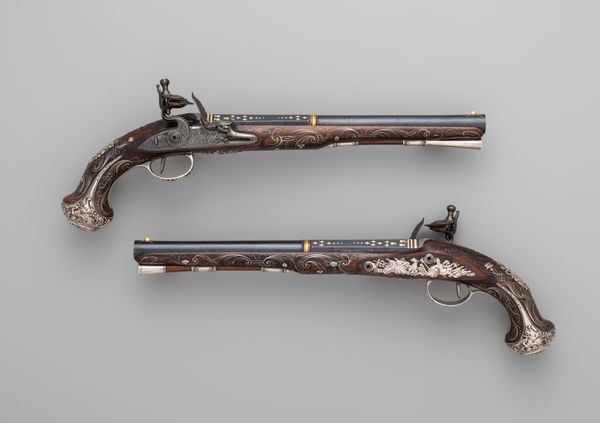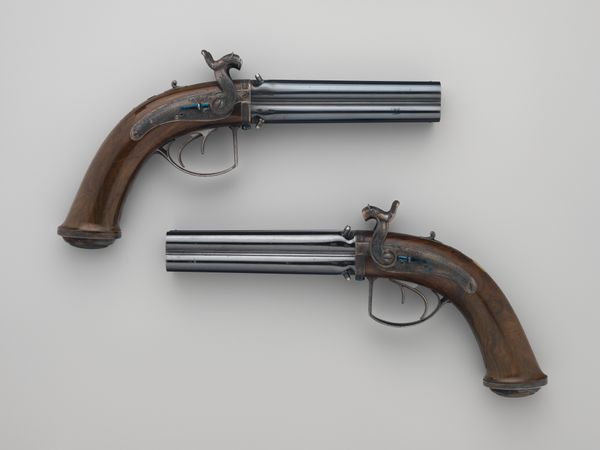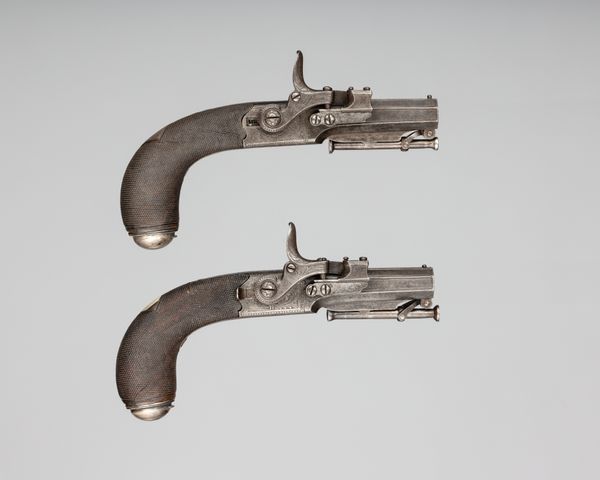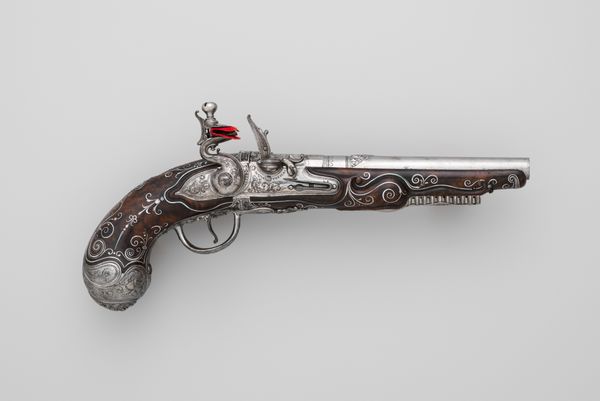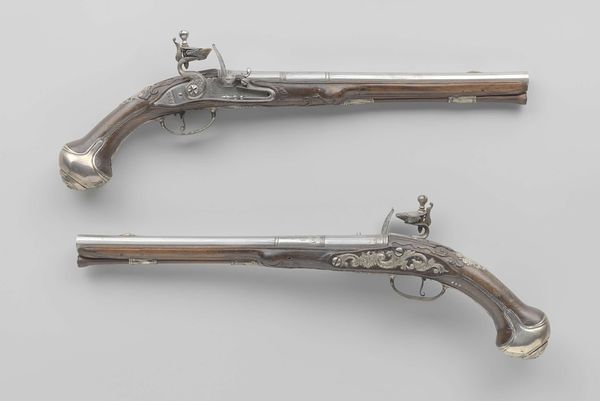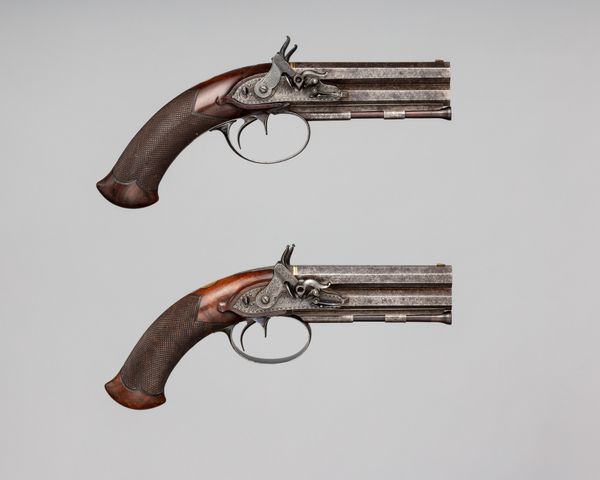
drawing, carving, print, metal, wood
#
drawing
#
carving
# print
#
metal
#
wood
#
islamic-art
#
armor
Dimensions: Pistol (a): L. 13 1/2 in. (34.3 cm); L. of barrel 7 15/16 in. (20.2 cm); Cal. .62 in. (15.74 mm); Wt. 2 lb. 1.7 oz. (955 g); pistol (b): L. 13 3/8 in. (34 cm); L. of barrel 7 15/16 in. (20.2 cm); Cal. .61 in. (15.49 mm); Wt. 2 lb. 0.9 oz. (932 g)
Copyright: Public Domain
Editor: This is a Pair of Flintlock Pistols, dating from around 1781 to 1791. They are currently housed at the Metropolitan Museum of Art. Made of wood, metal, and what looks like meticulous carving and print work, they seem almost too beautiful to be weapons. What stories do you see reflected in these objects? Curator: These pistols aren’t merely functional; they speak volumes about status, power, and cultural exchange. Notice the elaborate ornamentation - these symbolic visual markers transform weapons into ornate works of art. How do you think Islamic art influences the design motifs on these pistols? Editor: Well, I do see that the intricate details are vaguely reminiscent of traditional Islamic patterns and calligraphy. But is there more than just a design choice at play here? Curator: Absolutely. Consider Claude Martin, the man whose profile is connected to the pistols. He was a French adventurer in India, deeply involved with the Lucknow court. These guns embody a fascinating intersection of cultures. The artistry speaks of a world where elegance and danger were intertwined. They tell tales of cultural adaptation, where styles mingle, reflecting power dynamics of the era. What emotional impression does that juxtaposition of beauty and lethality make on you? Editor: It is compelling! It almost feels… paradoxical. Seeing the beauty interwoven with the destructive capability of the pistols gives them a charged feeling, loaded with both beauty and fear. I hadn't considered the cultural fusion in such a direct, tangible way. Curator: Indeed. Every curve, every flourish carries layers of historical context and psychological weight. Reflecting on them, we’re left contemplating not just craftsmanship, but the complex relationships between cultures and the individuals who navigated them.
Comments
No comments
Be the first to comment and join the conversation on the ultimate creative platform.
